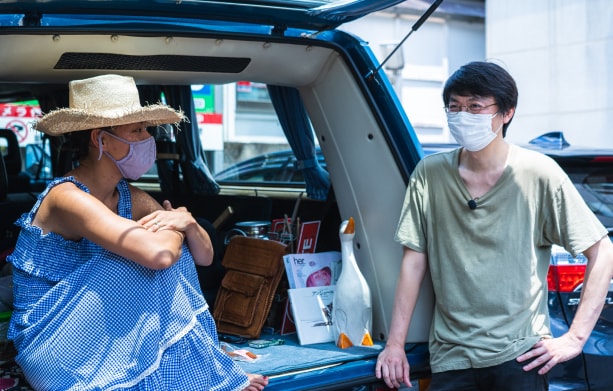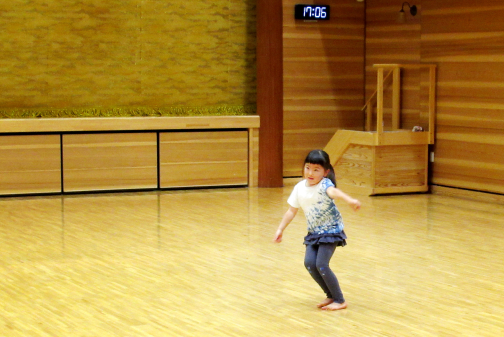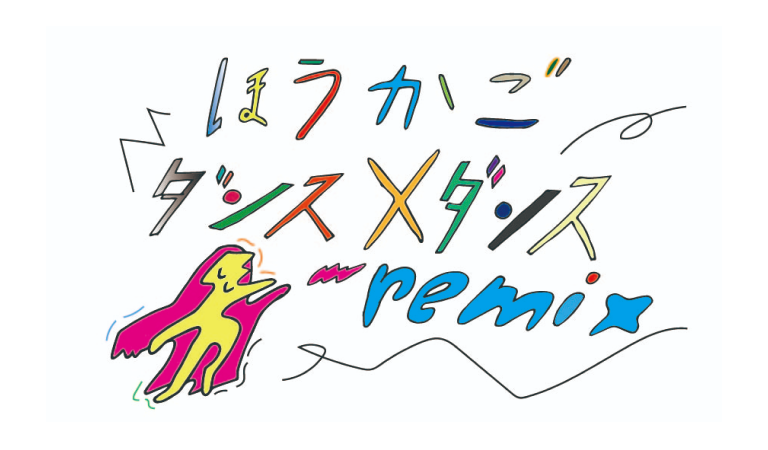Reflecting on the ADD Hinode Town Project
"Cultural Perspectives for Children"
Koharu Sugawara
Dispatched Dance Expert
Remon Nakanishi
Researcher, Choreography Assistant
Rio Takanaka
Assistant to Koharu Sugawara

――How do you feel about finishing the project?
Koharu Sugawara (KS): It was fun. I love children. In fact, I'm more of a child myself. I think dance is incredible because dancing together transcends the borders. Nationality, gender, age, you name it. Children understand this the best. I think I learned more from them. They surprise me with new realizations, and it makes me wonder how much of an adult I am.
Rio Takanaka (RT): The ideas coming from the children were new discoveries for me. We have the tendencies of moving to the music, and thinking too much about rhythm. Then, while looking for movement images, out of the blue someone shouted "Ferris wheel!" and I thought, "Ferris wheel?", but who knows where inspiration comes from.
KS: Maybe we should invite children when we choreograph a piece next time. It brings out the most excitement. If I ever open a dance studio, I would want to do a class where the children teach the adults.
Remon Nakanishi (RN): As a researcher visiting to Hinode Town, I enjoyed learning the local culture as I walked around. Projects like this tend to be somewhat pushy sometimes, but in the end, it was nice to have support from various people who are involved with the local culture. If we were to continue these processes even further, something amazing would happen. Nowadays traditional performing arts are struggling its continuance everywhere, but I think experiencing the art first hand makes a big difference. I feel like this project was kind of like an experiment in help passing down a traditional performing art form. I had fun playing the role of the "connector" in this project, building connections between Koharu and local residents, or between the future generations and the adults.
KS: I dance yosakoi at times, but any dance is the same in terms of "devoting" your soul. "Devoting" your soul to something. There are no boundaries in doing so.
RN: In this project, we were able to bring together Koharu's dance and local traditional dance cultures as equivalent. By moving their own body and having a first hand experience, rather than being explained with words, the children have broadened their cultural perspectives, I think. Every dance has its own aesthetics formed in the course of time.
――There has been a recent dance culture boom all over Japan?
KS: There's a tendency of a dance becoming superficial nowadays, with people becoming comfortable in placing themselves in society, and filming their dance on their phones. But that's where the dance doesn't tell a lie. Even for workshops, it's really hard for me to loosen up those who dance superficially. 2 hours is definitely not enough, and it's tiring. Though I always have lots of energy. But I want to ask them, "Would you be the same if this was a Michael Jackson audition?" I want everyone to seize the day. Nervousness will prevent you from focusing on the music, and absorbing it like a sponge. So I try to help those who need to loosen up.
RN: I remember your first session at ADD, you played the music the moment you came in, to involve the children and get them moving their body to the rhythm.
KS: Exactly. Adults tend to think about the concept first, but there's no such thing as right or wrong, really. It's never a "No", and it's just a matter of adding humor, but adults lack that ability. That makes the children get stuck in the concept, and the nervousness occurs. So I loosen them up by involving in the activity, because they're here to do dance, right?
RN: I think artists sometimes reveal the weirdness of conventions. They dismantle them by actions or performances. I remember from a different session, you asked the children what they do in school, and let them pick up the movements they make in their daily life, and reenact them while walking around. It was interesting how you showed them the core of how dance choreographies were made through these activities.
KS: Forms of expressions can essentially be done at any time and anywhere. A parking lot or home can become a stage. Imagination can take you anywhere.
――When you asked "Who wants to dance solo?" the youngest child raised her hand and really danced alone in the vast space of the gymnasium. It was spectacular.
KS: Being able to dance alone, stand alone in a space without hesitation is amazing. I think it's really important. Living every day as new, always trying unfamiliar things, moving towards fun, makes the world a happier place. Exposing your bare soul is scary. You can't talk with a bare soul, but you can dance with that.

It was the youngest girl who raised her hand and showed her solo dancing to the music.


